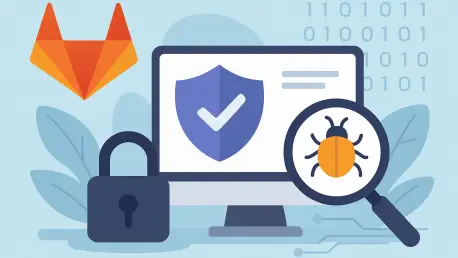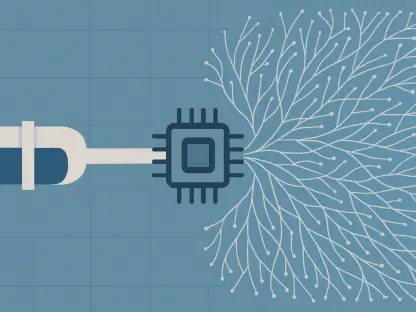In an era where cyber threats loom larger than ever, the integrity of collaborative software development platforms has become a cornerstone of organizational security, making the recent urgent updates from GitLab a critical point of focus for DevOps teams worldwide. As a leading tool for version control and project management, GitLab serves countless enterprises and individual developers, which amplifies the impact of any vulnerability within its ecosystem. The company has just rolled out essential security patches across multiple versions, addressing a series of severe flaws that could jeopardize system availability and data confidentiality. These updates are not merely routine fixes but a vital response to risks such as denial-of-service attacks and unauthorized access through sophisticated exploits. With self-managed installations particularly at risk, the urgency to apply these patches cannot be overstated, as the potential for exploitation could disrupt operations on a massive scale.
Addressing High-Impact Security Threats
Tackling Server-Side Request Forgery Risks
One of the most alarming issues rectified in the recent GitLab updates involves a server-side request forgery vulnerability, identified with a high severity score. This flaw, affecting a broad range of versions, allows authenticated users to exploit webhook custom headers to make unauthorized internal requests through proxy environments. Such a capability in the hands of malicious actors could lead to significant breaches, exposing sensitive internal systems or data. The risk associated with this vulnerability underscores the importance of robust input validation and access controls in software platforms that handle extensive user interactions. GitLab’s swift action in releasing patches for versions 18.3.2, 18.2.6, and 18.1.6 demonstrates a proactive stance in mitigating threats that could compromise entire networks, urging administrators to prioritize immediate updates to shield their systems from potential exploitation by attackers seeking to manipulate internal communications.
Beyond the technical details of this specific flaw, the broader implications for organizations using GitLab are profound, as server-side request forgery can serve as a gateway to deeper network infiltration. This type of attack often goes undetected for extended periods, allowing adversaries to map out internal infrastructures or pivot to other systems. The complexity of modern DevOps environments, where numerous integrations and automated workflows are common, amplifies the potential damage. GitLab’s response highlights the necessity of continuous monitoring and rapid patch deployment to close such critical gaps. For self-managed instances, the responsibility falls on administrators to ensure that updates are applied without delay, as the window for exploitation remains open until systems are secured. This situation serves as a stark reminder of the evolving nature of cyber threats and the need for vigilance in protecting collaborative platforms that are central to software development processes.
Mitigating Denial-of-Service Challenges
Another pressing concern addressed in the security updates is a critical denial-of-service vulnerability tied to SAML response mechanisms, carrying a substantial severity rating. This issue enables unauthenticated users to overwhelm systems by flooding them with large, concurrent responses, effectively rendering services unavailable to legitimate users. The wide range of affected versions amplifies the urgency for organizations to act swiftly in applying the provided patches. Such disruptions can have cascading effects, halting development workflows and impacting productivity across teams. GitLab’s focus on resolving this flaw reflects an understanding of how availability is just as crucial as data protection in maintaining trust and operational continuity for users relying on the platform for mission-critical projects.
In addition to the SAML-related issue, several other denial-of-service vulnerabilities have been patched, targeting areas like background job processing and file upload endpoints. These flaws, exploitable by authenticated users with varying levels of access, could disrupt administrative tasks or system performance through maliciously crafted content or oversized uploads. The diversity of these attack vectors illustrates the multifaceted challenges in securing a platform with extensive functionalities. For organizations, this underscores the importance of not only updating systems but also enforcing strict access policies to limit the potential for internal misuse. GitLab’s comprehensive approach in tackling these issues across multiple versions ensures that users can maintain service reliability, provided they implement the updates promptly to prevent service interruptions from becoming a gateway to more severe exploits.
Reinforcing System Integrity and Future Preparedness
Securing User-Controlled Inputs
A recurring theme in the vulnerabilities addressed by GitLab is the exploitation of user-controlled inputs, which attackers leverage to disrupt services or gain unauthorized access. Issues such as token operations with excessively long names or malicious content in commit messages highlight how seemingly innocuous features can become attack surfaces. These medium-severity flaws, while not as immediately catastrophic as others, still pose significant risks to system stability and administrative efficiency. GitLab’s updates across affected versions aim to neutralize these threats by tightening controls around input handling, emphasizing the need for developers and administrators to remain cautious about the data processed within collaborative environments where user interactions are frequent and diverse.
The broader lesson from these vulnerabilities lies in the balance between functionality and security in modern software platforms. Features designed to enhance user experience, such as customizable tokens or detailed commit notes, can inadvertently create openings for malicious actors if not rigorously safeguarded. GitLab’s response through targeted patches serves as a critical step, but it also calls attention to the ongoing need for organizations to complement these updates with internal best practices. Regular audits of user permissions and input validation protocols can further reduce exposure to such risks. As cyber threats continue to evolve, the collaborative nature of platforms like GitLab necessitates a layered defense strategy, ensuring that every entry point, no matter how small, is fortified against potential exploitation by those seeking to undermine system integrity.
Emphasizing Timely Action and Collaboration
Reflecting on the urgency of the situation, GitLab’s communication around these security updates stressed the importance of immediate action for self-managed installations, as cloud-hosted users have already been protected. The company’s commitment to transparency is evident in plans to disclose detailed information about these issues publicly after a short grace period, encouraging a culture of accountability and shared responsibility. This approach not only aids administrators in understanding the scope of the risks but also fosters trust within the user community by ensuring that no critical detail is obscured. The collaboration with security researchers through bug bounty programs further exemplifies how community-driven efforts can enhance platform resilience against sophisticated threats.
Looking back, the rapid response to these critical vulnerabilities by GitLab sets a strong precedent for handling security challenges in collaborative development environments. The actionable next step for organizations is clear: prioritize the deployment of patches to safeguard systems from potential exploitation. Beyond immediate updates, the incident prompts a renewed focus on proactive measures, such as investing in regular security training for teams and adopting automated monitoring tools to detect anomalies early. As the landscape of cyber threats continues to shift, the emphasis on preparedness and swift collaboration with the broader security community emerges as a vital consideration for maintaining robust defenses in the face of ever-evolving risks.









